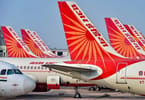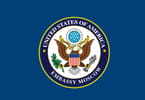The modern cruise industry was born in the 1960s when the era of ocean liners ended with the advent of transoceanic air travel. Ocean Liners were at their peak of grandeur and technology when the world found something newer and better, and suddenly thousands of capable individuals working upon hundreds of ships were no longer in demand. It isn’t often that an industry as robust and important as ocean liners becomes obsolete almost overnight.
Today’s cruise ships are an American adaptation of the European ocean liner tradition. While most of the ocean liner business originated in European, with names like Cunard, Holland America and Hapag Lloyd; the modern cruise industry started and blossomed in America with names like Carnival Corp., Royal Caribbean International and NCL. New York and Los Angeles played a part in the early days of cruising, but it was Miami that spawned today’s most successful cruise lines. Beginning with the 1970s Americans took to cruising in a big way, but the ships they sailed upon were still largely staffed with European officers and crewmembers.
The Europeans have a long, rich tradition of building and sailing passenger vessels, but they mostly started working for the American market in the early days of cruising. A few small European cruise lines emerged, such as Pullmantur for Spain or Aida for Germany, using former ocean liners repurposed as pleasure vessels, but until 2000 cruises as a vacation were hardly on the radar of Europeans compared to the booming cruise market in the States. When the American cruise industry had penetrated 10% of the US population, most of the European countries were still at one to four percent.
This started to change in the late 1990s when the 60-year old Italian cruise line, Costa Crociere, was acquired by the U.S.-based Carnival Corporation. The world’s most successful cruise company, Carnival Corp. also has acquired Holland America and Cunard Lines.
Costa, now under Carnival, had a new vision for cruising in Europe. Just as the continent was planning to become the European Union, Costa envisioned the first pan-European cruise line to offer modern, American-style cruise ships to the entire European market. The idea was to span the language barrier by offering everything onboard in five languages; Italian, French, Spanish, German and English.
European pleasure cruising started to catch on in a big way in the new millennium. Costa was the immediate beneficiary, but in 2003 another Italian shipping magnate, Gianluigi Aponte, also saw the potential for the pan-European cruise market. Aponte was already sole proprietor of Mediterranean Shipping Company, the second largest cargo shipping business in the world with over 400 ships, when he started a new cruise line; MSC Cruises.
Aponte didn’t just dip his toes into the cruise business, he dove in head first. He scheduled the fastest build-out of a modern cruise fleet in history. Since 2003 MSC Cruises has already built ten brand new ships and has another on the way. Not only is MSC the youngest cruise fleet in the world, it also sails two of the second largest class of cruise ships in the world (after Royal Caribbean). These two ships are each capable of carrying 3,959 passengers and come in at 138,000 gross tons.
Now there are two “pan-European” cruise lines, Costa Crociere (Italian for ‘cruises’) and MSC Cruises. By marketing their ships across the entire continent, both Costa and MSC are able to offer ships on a much grander scale. Is there a bitter rivalry between MSC and Costa Cruises? To say the least, yes, there is and there should be.
How is Pan-European Cruising Different from American Cruising?
The short answer to this question is not much different at all � especially from the outside looking in. There have always been cruise ships in Europe, but they were marketed largely to American passengers. The native language onboard on such ships is always English. While these new pan-European cruise ships are nearly identical in style and even decor to their American cousins, the difference is the use of five languages onboard, English being the last of them.
In fact, although it isn’t highly advertised, the obvious plan of Costa Cruises all along has been to almost entirely duplicate the Carnival Cruise Line experience but for the European market. Carnival Cruise Lines is the most successful singular cruise line in the US market, so duplicating the model in Europe was a natural decision. All of the Costa ships built since 2000 are identical copies, in terms of superstructure, to existing Carnival ships. While the interior decor is different on each Costa ship just as each Carnival ship has a unique interior, the Carnival Destiny, Conquest and Spirit floor plans are all represented in the Costa fleet.
In the United States, Royal Caribbean and NCL have become the top competitors to Carnival Cruise Lines, so it only makes sense that a competitor to Costa would emerge in the European market. While Royal Caribbean has a strong presence in Europe, their onboard language is English only so they do not compete directly with Costa Cruises. That honor went to MSC Cruises, the only other multi-lingual pan-European cruise line and hence the number one competitor with Costa.
These two cruise lines are certainly not the first products to market to the entire European continent. But there is something unique about any product which requires communicating in five languages simultaneously. For the most part, every passenger receives ship communication only in his language, such as menus and waiters who know nationality of their guests in advance. So the language barrier only becomes an issue under certain circumstances, such as during the entertainment variety shows. Naturally, each language cannot be presented at once in all cases. Menus can be printed in individual languages and waiters can take orders in the passenger’s native tongue, but production shows with large audiences have to either feature non-verbal entertainment, or else announcements have to be made in the five predominant languages consecutively.
Having a multicultural environment also creates diversity and a wider range of options in other areas, such as cuisine. Modern Europeans not only understand and appreciate this diversity; they have developed remarkable coping skills for this language barrier. They are quite used to the situation and coexist easily. Many Americans, on the other hand, find listening to four other languages before the English version arrives to be somewhat frustrating.
So, the bottom line is that both of these cruise lines are ideally suited for the European cruiser looking for the advantages of a pan-European cruise ship. These include the latest in ship design with large pools, lavish theaters, a diversity of cuisine and state of the art cabins. They get newer and bigger ships at better prices than if they book a singular cruise line where everything is in their native tongue.
It’s a bit different for Americans. Essentially, we are just plain lucky to have plenty of cruise ships that already conduct everything in English. It is largely because of the American entertainment industry, which has been exporting music, movies and television overseas for decades now, that English is the world language. All Europeans benefit from knowing a little English, so it is a rare European these days that does not understand at least a smattering, far more than we Americans understand Italian or French.
The coup de résistance for English as a world language on my recent voyage on MSC Cruises came when I encountered a ship security guard scanning cards for guests leaving the ship in port. When they addressed her is French she replied to them, “I speak English!” – In a rather stern tone of voice I might add. These French responded to her in English immediately in almost an apologetic manner. I asked her about it and she said, “I am not in a public service job on the ship, I am a security officer. English is the world language and I don’t speak any European languages (she was Rumanian). I speak English and if guests want to talk to me that is what they must use.” Okay � interesting.
So, on MSC Cruises (I believe the same is true on Costa), the official “lingua franca” among the crew is English (the phrase that refers to the world language, although technically it translates as “French tongue,” the former world language). English is also spoken when one passenger cannot understand a staff member or another passenger.
Americans on European Cruises?
The question inevitably arises, should an American take an MSC or Costa cruise? The answer is yes, if you have the right expectations. The advantages are that you can often see terrific savings on cruises on these lines, especially in the Caribbean or South America. They will always speak enough English for you to communicate with the crew and your tour guides.
The drawbacks are that most of the passengers will not speak much English, so don’t expect to make a lot of new friends. You will be surrounded by people speaking non-English, so you will never understand what anyone is saying. This means you won’t have many spontaneous conversations with strangers, and you even feel a certain cultural void as you walk around the ship. The television system had a few English channels, but they were CNN International and two financial channels covering the European stock market.
If you are taking younger kids, they probably won’t enjoy the kids program as much in Europe since most activities will be conducted in European languages. They probably won’t make nearly as many friends onboard as they would on an English speaking ship. Teenagers might do better since older kids in Europe often speak English surprisingly well. In Europe, however, most Americans who cruise on these lines should plan to stick together except for communicating with the staff.
Both MSC and Costa also sail to the Caribbean, and things will be different there, especially for the kids. The primary language will be English and many of the guests will be American. Kids up to age 17 sail free year ’round on MSC.
There are other cultural issues. The Europeans are not nearly as cigarette-phobic as Americans. Expect to encounter a fair number of people smoking, even though they are restricted to certain areas of the ship. In those areas it can get thick, and if you are especially sensitive to even the smell of smoke you will probably notice it in the corridors.
Another issue is the itineraries. Most Europeans have already seen Naples and Rome, so itineraries tend to focus more on tourist spots for Europeans rather than what Americans would consider ideal European sightseeing destinations. They will visit St. Tropez rather than Nice, or Mallorca rather than Gibraltar.
Dining times are another issue. Europeans, especially from Spain and Italy, dine much later than Americans. Early seating in Europe will start at 7:30, late seating at 9:30 or 10:00. Europeans are far less addicted to room service than we are. In Europe there will be an a la carte charge for room service menu items, although it is not prohibitive. The room service menu is also limited in offerings compared to US-based cruise lines.
A final difference, when these ships are in Europe, is that they will charge for all drinks with meals, even in the buffet area. This even includes water which comes from a bottle, just like a European restaurant. Iced tea will cost the same as a soft drink. This changes when these ships come to the Caribbean, however. Room service is again free and there is no charge for water, iced tea or similar drinks with meals. In the buffet for breakfast even in Europe you can get coffee and juice at no charge, but the orange juice is more like orange soda and the coffee is the black tar they call coffee in Europe. The upside is that the food selection in the buffet area is spectacular for every meal because the ship has to appeal to so many tastes.
Summing Up European Cruise Lines
These two pan-European cruise lines, Costa and MSC Cruises, are essentially American-style cruising on big, modern cruise ships made accessible to the European market. They have everything a state-of-the-art cruise ship has; water facilities with pools, hot tubs and water slides; balcony cabins, sports activities, alternative restaurants, lido restaurants, big production shows and more. You can easily market the same ships in the US market quite successfully.
The difference comes in the onboard interaction with the staff and other passengers. This is a European culture, with smoking and very casual dress accepted as normal by the passengers. These cruise lines refer to the onboard experience as a “European cultural experience,” which it is. However, it is a modern European experience, not the same as the historic cultural European experience most Americans think of first.
Both of these cruise lines invite and encourage Americans to try their ships in Europe and in the Caribbean. If your goal is to experience modern European culture this is one way to do it, but it is a little like listening to an American sitcom in a foreign language on TV. It all looks and feels familiar, but with a distinct difference. Some people will enjoy that experience and some people won’t. It all depends on your comfort level with being in surroundings where few people are speaking English. Other than that, these are beautiful cruise ships with great prices on cruises.
IHE Ị GA-Ewepụ na edemede a:
- A few small European cruise lines emerged, such as Pullmantur for Spain or Aida for Germany, using former ocean liners repurposed as pleasure vessels, but until 2000 cruises as a vacation were hardly on the radar of Europeans compared to the booming cruise market in the States.
- Not only is MSC the youngest cruise fleet in the world, it also sails two of the second largest class of cruise ships in the world (after Royal Caribbean).
- Just as the continent was planning to become the European Union, Costa envisioned the first pan-European cruise line to offer modern, American-style cruise ships to the entire European market.






















